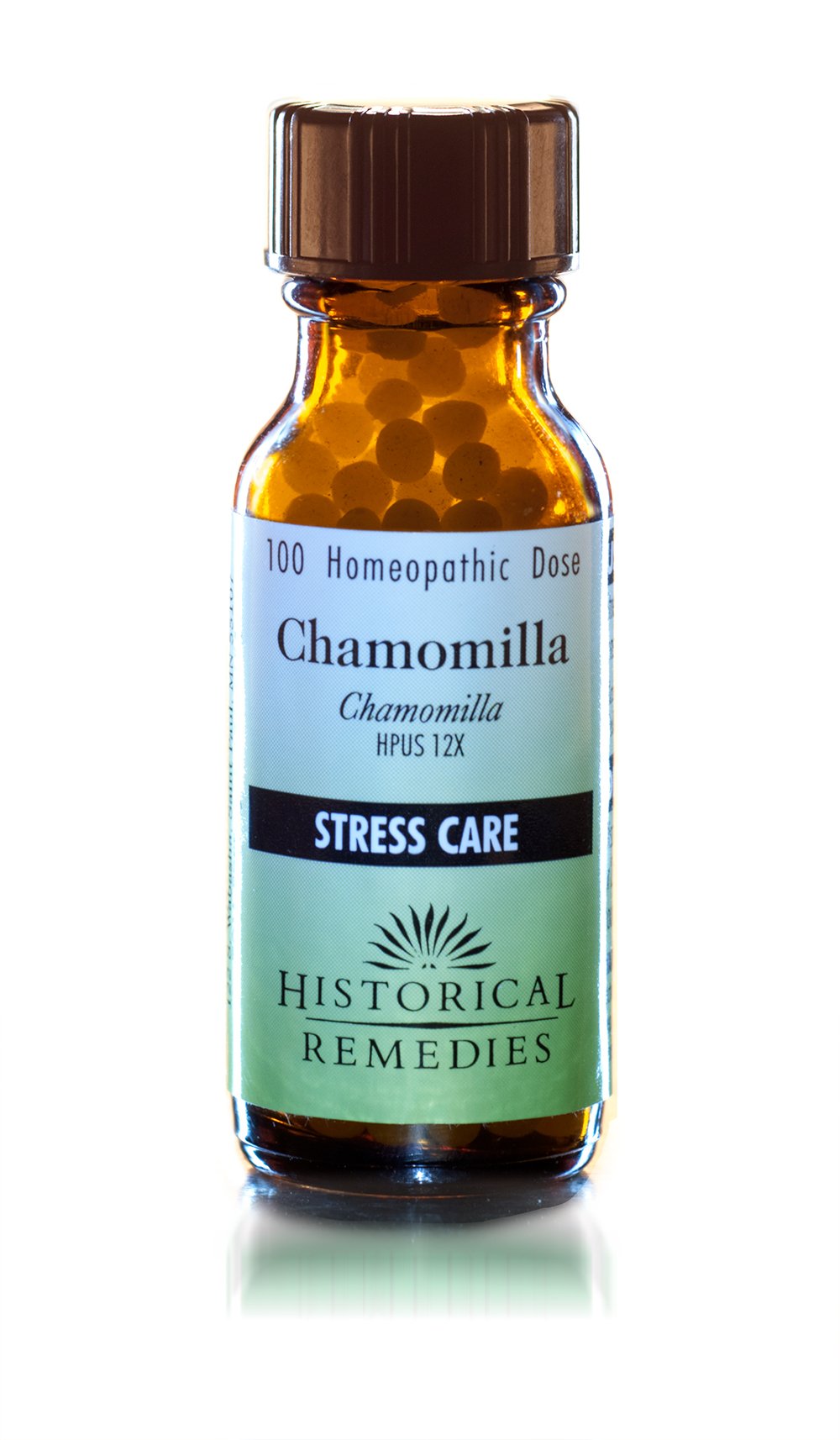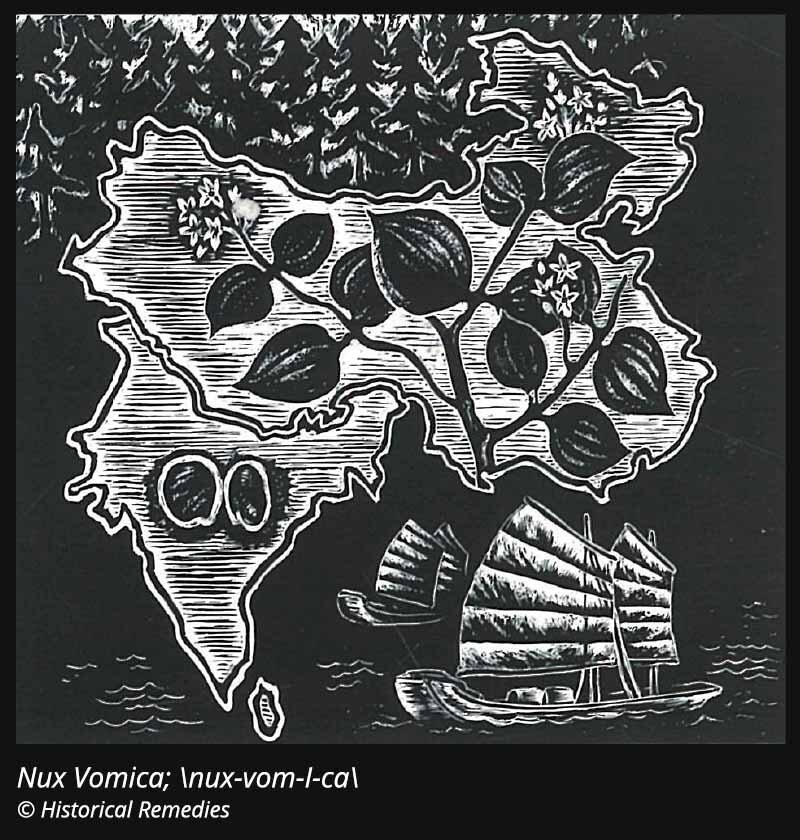Homeopathic Single Remedies
12x Potency
Reference
ACONITE
Energy
Homeopathic Aconite assists regulation of the body’s core temperature. It helps release excess heat in the body during fevers, and generates heat to protect the body from colds and loss of energy. Aconite supports the body during travel, times of stress, or when the body is most susceptible to catching a cold - especially when a change in weather brings on a chill. Aconite is recommended to take at the onset of symptoms such as a scratchy throat, mild fever, fatigue, or malaise.
Claims based on traditional homeopathic practice, not accepted medical evidence. Not FDA evaluated.
Active Ingredients (HPUS)
Aconite 12X
Inactive Ingredients
Organic beet-derived sucrose
Gluten-free, lactose-free, non-GMO
1/2 oz glass bottle
95 doses
Latin Name
Aconitum Napellus; \ac’-o-nite\
Common Name
Monkshood, Wolfbane, Friar’s Cap
Source & Habitat
Aconite is found in the lower mountain slopes of the Northern Hemisphere – from Himalayas through Europe. Medicine is derived from the whole plant, split from the root and pickled in August.
History
Aconite is a toxic alkaloid. Dr. Hahnemann introduced Aconite to the modern Materia Medica in 1805 to alleviate fevers and inflammation. Its homeopathic application brought an end to bloodletting, giving Aconite the reputation as the "homeopathic lancet."
NUX VOMICA
Indigestion & Stress
Nux Vomica’s homeopathic reputation is based on its ability to ease modern day complaints of indigestion, intoxication, and stress. Nux Vomica helps the effects of stress on the mind, and excess intake of food, alcohol and drugs on the digestive system. Nux Vomica offers modern comfort when travel, hangovers, busy schedules, overwork, or late night meals cause digestive and mental distress.
Claims based on traditional homeopathic practice, not accepted medical evidence. Not FDA evaluated.
Active Ingredients (HPUS)
Nux Vomica - 12X
Inactive Ingredients
Organic beet-derived sucrose
Gluten-free, lactose-free, non-GMO
1/2 oz glass bottle
95 doses
Latin Name
Nux Vomica; \nux-vom-I-ca\
Common Name
Poison Nut
Source & Habitat
A large evergreen tree found in China, India and Vietnam that yields a nut-like fruit the size of an orange. Medicine is derived from the seed of the nut pounded into a fine powder.
History
Nux Vomica contains the alkaloid known as Strychnine. It was first brought to Europe from Southeast Asia in the 15th century and was known as a poison until two centuries later when physicians discovered its medicinal action on the digestive tract. Also valued in history as a tonic for the circulatory system. Homeopathic preparations stripped its toxic chemistry. Dr. Hahnemann introduced it as a homeopathic digestive aid in 1805.
IGNATIA
Emotional Stress
Ignatia’s homeopathic chemistry has a sympathetic resonance with strong emotions. Ignatia consoles the spirit when coping with grief, trauma, separation anxiety, hurt, or when experiencing symptoms of depression. Ignatia promotes emotional well-being without side effects.
Claims based on traditional homeopathic practice, not accepted medical evidence. Not FDA evaluated.
Active Ingredients (HPUS)
Ignatia 12X
Inactive Ingredients
Sucrose / Lactose
1/2 oz glass bottle
95 doses
Latin Name
Ignatia Amara; \ig-na'-tia\
Common Name
St. Ignatia Bean
Source & Habitat
Native of the Philippine Islands. Medicine is derived from the bean, which resembles a pear shaped pod and is ground to a fine powder.
History
The Ignatia bean contains the alkaloid Strychnine. Ignatia is named after the founder of the Jesuit order who first introduced it to Europe in the 17th century. Historical herbal uses included treatment for cholera and cardiac conditions. Ignatia’s homeopathic value for emotional wellness was introduced by Dr. Hahnemann in the 18th century.
CHAMOMILLA
Tension & Nerves
The homeopathic power of Chamomilla is in its biological response to those environments that set nerves afire. Chamomilla helps release tension in the body and mind brought on by stress, anxiety and irritability.
Claims based on traditional homeopathic practice, not accepted medical evidence. Not FDA evaluated.
Active Ingredients (HPUS)
Chamomilla12X
Inactive Ingredients
Sucrose / Lactose
1/2 oz glass bottle
95 doses
Latin Name
Chamomilla; \cham’-o-mill-a\
Common Name
Chamomille, feverfew
Source & Habitat
A plant of the aster family. Chamomilla grows in uncultivated fields and dry sandy locations in many areas of Europe. Medicine is derived from the flowers, leaves and bud of plant when in bloom. Collected between May and August when it is not wet with dew or rain.
History
Chamomile’s herbal value as a calming agent has been recognized for centuries. Its homeopathic strength acts deeply on the nervous system and tempers the effects of stress.
ARNICA
Muscle Soreness & Injuries
Arnica single remedy is no longer available. Please see Arnica Drops.
Arnica’s homeopathic reputation is built on its power to initiate tissue repair at the cellular level where physical trauma is most acutely experienced. Use Arnica ASAP after injury to help reduce swelling and bruising, and to repair skin and muscular tissue damage. Arnica promotes healing of overworked muscles from the demands of modern life, and is recommended for use before and after sports activities, surgery, or dental work.
Claims based on traditional homeopathic practice, not accepted medical evidence. Not FDA evaluated.
Active Ingredients (HPUS)
Arnica 12X
Inactive Ingredients
Sucrose / Lactose
1/2 oz glass bottle
95 doses
Latin Name
Arnica Montana; \’är-ni-ka\
Common Name
Leopards’s Bane, Falkraut, Mountain Arnica
Source & Habitat
This yellow flowering plant is found in mountainous regions around the world, primarily in the Alps. Medicine is derived from the plant and root gathered when in full bloom during July and August.
History
Arnica has been in use throughout history as a first aid for body injuries and soreness. Arnica is an effective herbal treatment whether its leaves are eaten right off the stem, prepared as a tea, or applied as an ointment. Homeopathically, Arnica works to initiate tissue repair at a cellular level.
RHUS TOX
Back & Joint Ache
Homeopathic Rhus Tox is recognized for the care of joint ache, arthritic symptoms, strained ligaments, and lower backache. Rhus Tox is recommended in the morning upon waking, especially on those damp days when arthritic symptoms are most tender or old injuries flare up. Rhus Tox is best used for joint pain that typically feels better with motion. (See Bryonia for joint pain that feels better when still or when resting).
Claims based on traditional homeopathic practice, not accepted medical evidence. Not FDA evaluated.
Active Ingredients (HPUS)
Rhus Tox 12X
Inactive Ingredients
Sucrose / Lactose
1/2 oz glass bottle
95 doses
Latin Name
Rhus Toxicodendron; \rhus’-tox\
Common Name
Poison Ivy
Source & Habitat
This common indigenous plant grows in fields, woods, and fence rows. Medicine is derived from fresh leaves gathered on cloudy days in May and June before the plant flowers.
History
This North American plant was brought to England in the 17th century. Its medicinal virtues were discovered when a doctor associated the cure of his patient’s skin disease with his exposure to the Rhux Tox plant which gives off the potent toxicodendric acid – the oil that produces the blisters associated with poison ivy. In its homeopathic form, Rhus Tox relieves symptoms of poison ivy and demonstrates the medical principle known as the "Law of Similiars."
PULSATILLA
Cold Care
Homeopathic Pulsatilla helps loosen congestion and clears the head from colds, allergies, and excess mucous from the consumption of dairy products and rich foods. Pulsatilla is also known to aid stimulate menstrual flow and moderate moods during a sluggish cycle.
Claims based on traditional homeopathic practice, not accepted medical evidence. Not FDA evaluated.
Active Ingredients (HPUS)
Pulsatilla 12X
Inactive Ingredients
Organic beet-derived sucrose
Gluten-free, lactose-free, non-GMO
1/2 oz glass bottle
95 doses
Latin Name
Pulsatilla Nigricans; \pul-sa-til’-la\
Common Name
Wind Flower, Pasque Flower, Meadow Anemone
Source & Habitat
This violet brown flower is found in the sunny soil of elevated hills and open pastures in the Central and Northern countryside’s of Europe. Medicine is derived from the entire plant picked when flowering in April and May.
History
Pulsatilla was traditionally used as an herbal remedy for the nervous system, relieving muscle spasms and treating eye ailments. In 1805, Dr. Hahnemann discovered Pulsatilla’s significant range of homeopathic applications for clearing congestion.
BELLADONNA
Sore Throat
Belladonna is a homeopathic remedy which can aid a sore throat suddenly brought on by a cold, or by breathing dry or damp air when sleeping or exercising.
Claims based on traditional homeopathic practice, not accepted medical evidence. Not FDA evaluated.
Active Ingredients (HPUS)
Belladonna 12X
Inactive Ingredients
Organic beet-derived sucrose
Gluten-free, lactose-free, non-GMO
1/2 oz glass bottle
95 doses
Latin Name
Belladonna; \bel-a’-dona\
Common Name
Nightshade, Black Cherry
Source & Habitat
This plant with bell shaped flowers grows in Europe and originates from the solanaceae family. Belladonna leaves and flowering branch tips are collected in the wild from May to July.
History
Belladonna has been in medicinal use for over five centuries. Traditionally, its herbal uses included treatment of headaches, menstrual symptoms, peptic ulcers, inflammation, and motion sickness. In 1801, Dr. Hahnemann discovered the homeopathic properties of Belladonna after he noted the similarity between the symptoms of Belladonna poisoning and those of scarlet fever.
IPECAC
Chest Cold & Asthma
In its homeopathic preparation, the Ipecac root helps drain fluids in the chest which contribute to a wet, rattling cough with wheezing. Ipecac is also a classic remedy which helps ease symptoms of Asthma and other respiratory ailments.
Claims based on traditional homeopathic practice, not accepted medical evidence. Not FDA evaluated.
Active Ingredients (HPUS)
Ipecac 12X
Inactive Ingredients
Organic beet-derived sucrose
Gluten-free, lactose-free, non-GMO
1/2 oz glass bottle
95 doses
Latin Name
Ipecacuanha; \‘ip’-e-cac\
Common Name
Ipecac Root
Source & Habitat
Common to South America. The dried root of the plant is used for its medicinal purpose.
History
The usefulness of Ipecac was discovered centuries ago when it was observed that the plant induced vomiting. While the traditional syrup of Ipecac continues to be used to induce vomiting, its homeopathic application has the opposite effect as it alleviates nausea and vomiting.
ARSENICUM
Stomach Flu
Not available at this time.
Homeopathic Arsenicum helps symptoms common to a stomach flu or food poisoning such as nausea, vomiting, diarrhea, and exhaustion. Arsenicum also helps comfort emotional distress experienced during a debilitating flu.
Claims based on traditional homeopathic practice, not accepted medical evidence. Not FDA evaluated.
Active Ingredients (HPUS)
Arsenicum 12X
Inactive Ingredients
Sucrose / Lactose
1/2 oz glass bottle
95 doses
Latin Name
Arsenicum Album; \-’al-bem\
Common Name
Arsenious Oxide; arsenic trioxide, white arsenic
Source & Habitat
Arsenic in the form of Arsenopynite mineral ore can be found in Europe and North America.
History
Many attempts were made in history to draw out the medicinal properties of Arsenic. In the 18th century, Dr. Hahnemann identified its homeopathic properties for the treatment of nausea, vomiting and diarrhea related to toxic poisoning and intestinal flu.
MAG PHOS
Menstrual Cramps
Not available at this time.
Homeopathic Magnesium Phosphate helps soften the deep contractions of menstrual cramps. Similarly, Mag Phos is indicated for any painful muscle cramp, especially those that follow strenuous exercise.
Claims based on traditional homeopathic practice, not accepted medical evidence. Not FDA evaluated.
Active Ingredients (HPUS)
Mag Phos 12X
Inactive Ingredients
Sucrose / Lactose
1/2 oz glass bottle
95 doses
Latin Name
Magnesia Phosphorica; \mag-phos\
Common Name
Phosphate of Magnesium
Source & Habitat
A mineral brought from the town of Magnesia in the district of Thessaly. Medicine derived from the pure mineral of phosphate.
History
This cell salt is a mineral element found in the body’s bones, teeth, brain, nerves, blood and muscle cells. Traditionally used for muscle and nervous disorders. Dr. Hahnemann developed its homeopathic use for relief of muscle cramps.




























